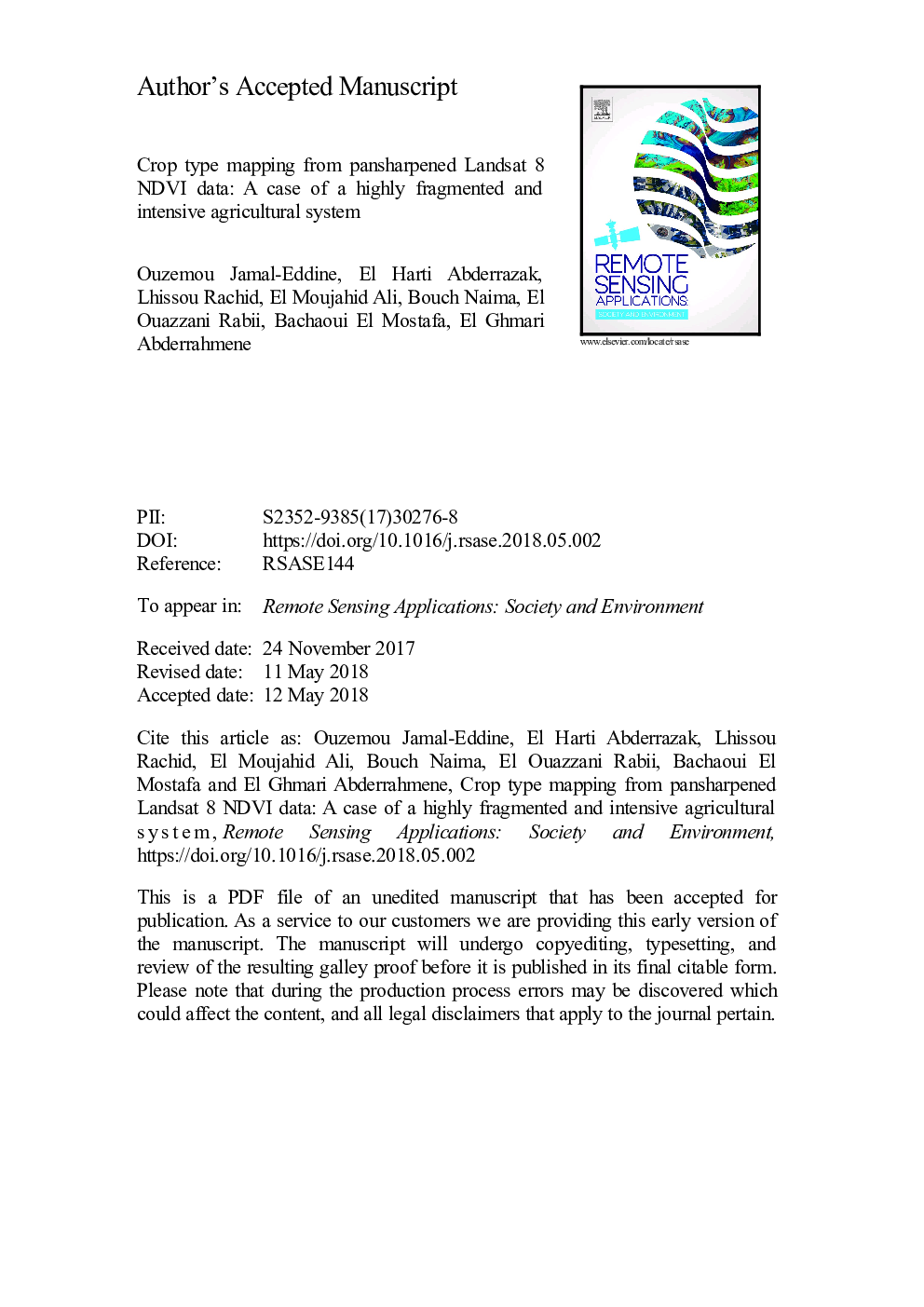| Article ID | Journal | Published Year | Pages | File Type |
|---|---|---|---|---|
| 8866304 | Remote Sensing Applications: Society and Environment | 2018 | 29 Pages |
Abstract
Retrieving crops and their location, as well as their spatial extent, are useful information for agricultural planning and better management of irrigation water resources as well as for crop health monitoring, towards an increased food production and reduced water use. Multispectral remote sensing images with a spatial resolution of 30â¯m or greater are often used for mapping crops in extensive agricultural systems at global and regional scale. However, that spatial resolution is inadequate for mapping highly fragmented and intensive agricultural landscapes, such as the Tadla Irrigated Perimeter (TIP) in central Morocco. Hence, our study aims to: (1) identify and map major crops in the TIP with improving the spatial resolution of producing maps from 30â¯m to 15â¯m; (2) retrieve the area of major cultivations; (3) compare machine learning classifiers namely, Support Vector Machine (SVM), Random Forest (RF) and Spectral Angle Mapper (SAM) as a distance-based classifier. Our methodology is based on the Landsat-8 OLI (Operational Land Imager) data pan-sharpened to 15â¯m. SAM, RF and SVM classifiers were used and compared for retrieving crops from a multitemporal dataset of the Normalized Difference Vegetation Index (NDVI) for 10 periods during the agricultural season. The RF, SVM and SAM have classified the major crops with overall accuracies of 89.26%, 85.27% and 57.17% respectively, and kappa coefficient of 85%, 80% and 43%, respectively, noting that sugar beet, tree crops and cereals are delineated accurately while alfalfa is not. This study showed a high performance by using time-series pan-sharpened OLI NDVI data coupled with machine learning classifiers for mapping different crops in irrigated, very fragmented and heterogeneous agricultural landscape.
Related Topics
Physical Sciences and Engineering
Earth and Planetary Sciences
Computers in Earth Sciences
Authors
Jamal-Eddine Ouzemou, Abderrazak El Harti, Rachid Lhissou, Ali El Moujahid, Naima Bouch, Rabii El Ouazzani, El Mostafa Bachaoui, Abderrahmene El Ghmari,
